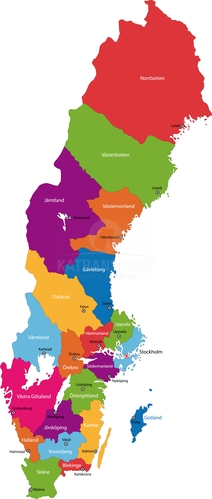Goods transport Sweden
Goods transport Sweden. From Sweden we transport electrotechnical and mechanical engineering components.
Sweden was a developing country with starving population until 1850´s. However, during several decades of the 19th century the group of politicians professing classic liberalism gave Sweden the freedom of religion, speech, movement and economic freedom, too, so that people were able to start their own business and trade on market. Free market enabled Swedes to specialize in things they were good at then, therefore wood and iron sectors and purchase the products of food and engineering industry, Swedes were not able to produce, for those things.
It resulted in the economic growth and industrialisation. They enabled to growth of prosperity and investments to education and health system. The salary in industry grew by 170 % between 1860-1910. It is much more than later. Life expectancy in Sweden grew by 10 years and infant mortality rapidly decreased. Sweden of those times was not a social state. It was rather a minimal state. The consumption of public sector was not higher than 6 % GDP until WWI.
Social democrats who gained power in 1932 continued in their liberal approach application to business and the policy of free trade. Even though the investments of government were slowly growing, the public sector was smaller than in the majority of countries in 1950 – about 25 % GDP, nearly the same as in the USA and Switzerland. The economy also profited from the fact that Sweden did not participate in any of the world wars. Swedish companies sold to both parties, the industry was not damaged and young Swedes did not die in trenches.
The grow of Sweden in 1870-1970 was the biggest in the world after Japan. In 1970 Sweden was the fourth richest member of OECD, after the USA, Luxembourg and Switzerland.
But then the social state of prosperity started to grow enabling politicians to redistribute the wealth created by individuals and market. The economy continued to grow. The development should be foiled only by planned economy, considering initial conditions, good industry, education and hard working people. However, the growth was slower than in other countries. The state of prosperity easily consumed the wealth created by the market and complicated the creation of new one.
The IKEA department store, one of the most famous Swedish companies
Since 1950 the private sector has not created (in net terms) a single work position. On the other hand the public sector has at least one million employees more.
During 1970´s the public sector became bigger and non-productive and labour market was regulated. The public consumption grew from 50 to 65 % during the period of 1976-1982. At the same time the currency had to be devaluated 5 times by 45 % in total. The average growth rate decreased by a half to 2 % in 1970´s and it continued to decrease in 1980´s. Another big crisis happened in 1990´s.
After more than 30 years of high taxation and growth of social state Sweden is not the 4th richest country of OECD any more. It is at 17th place. During 1980-1999 the gross income of the poorest Swedish households grew by approximately 6 %, while it was three times more in the USA.
The medium gross income of Swedish households at the end of 1990´s reached 26,800 USD. In the USA it was 39,400 USD.
The most famous companies
The important Swedish companies are: ABB, Electrolux, Ericsson, IKEA, H&M, Oriflame, SAAB, Scania, SKF, Sony Ericsson (since 2012 it is Sony), Volvo, Koenigsegg and A J Produkty, Husquarna.

